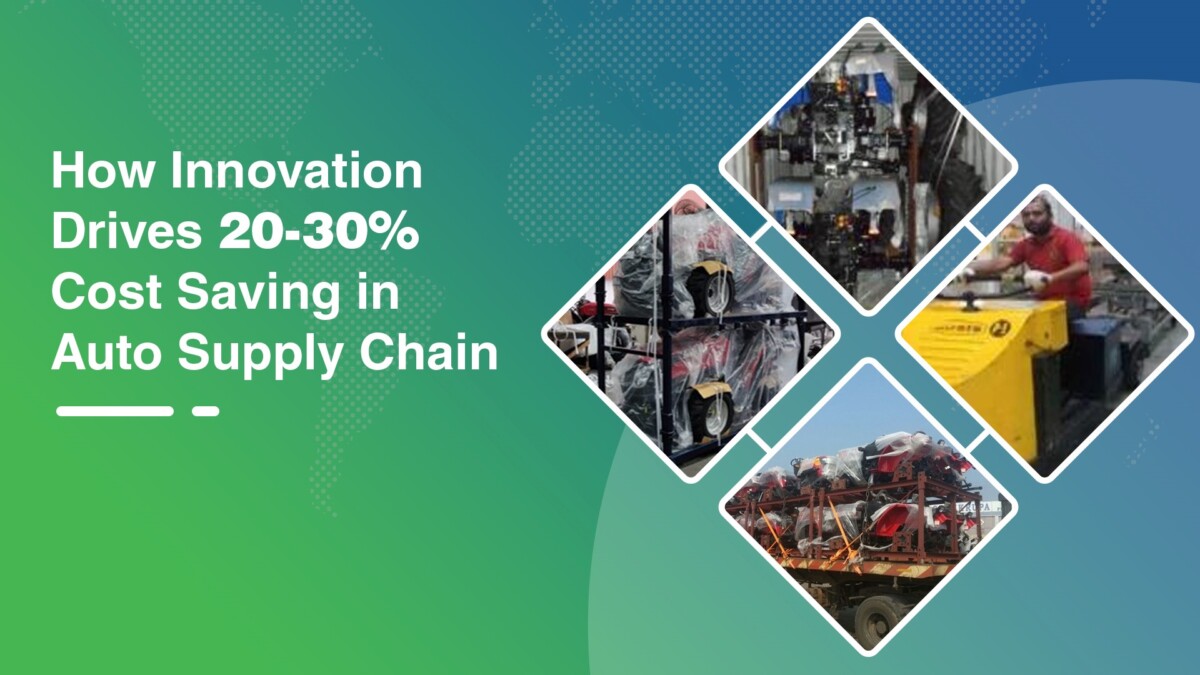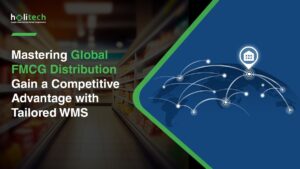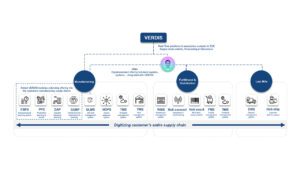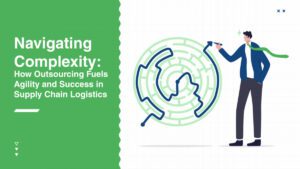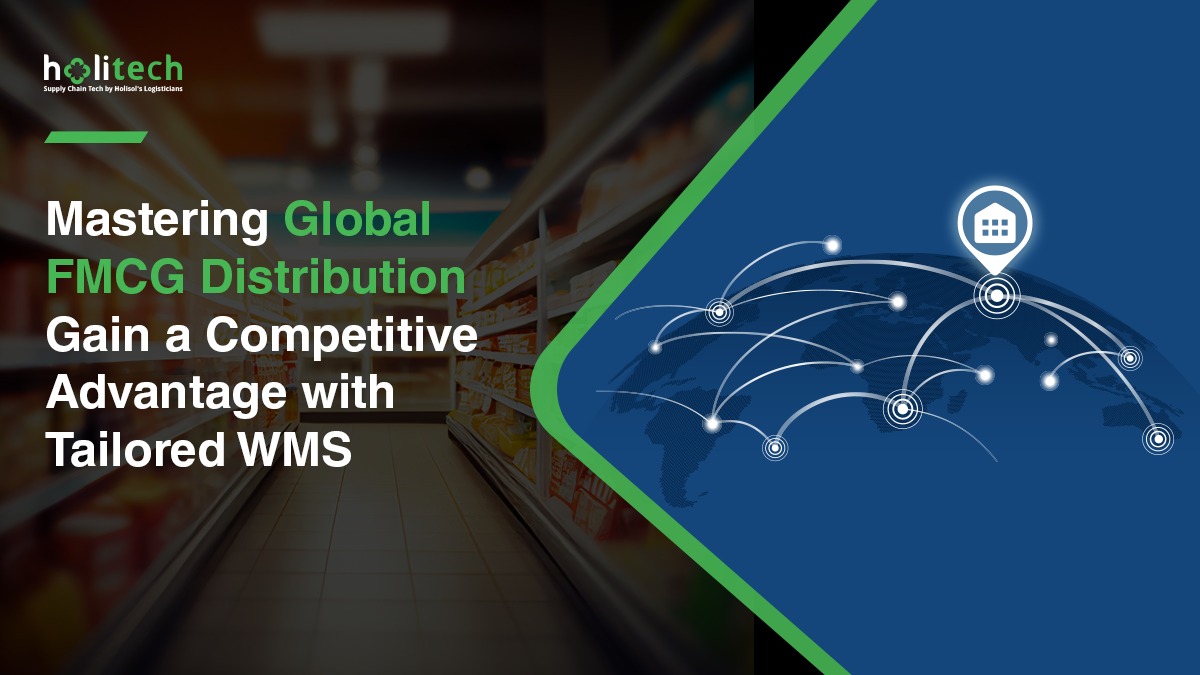The automotive industry has achieved maturity in its supply chain through continuous improvement, implementation of innovative concepts, and adoption of best practices. Despite the well-established standards, there are still opportunities for further improvement and optimization.
Addressing Challenges and Enhancing Efficiency:
In today’s dynamic business environment, automotive companies face various challenges that require a strategic approach to stay competitive. These challenges include increasing customer demands, evolving market trends, increasing supply chain complexity, facing tough competition, pressure to reduce carbon footprint and the need for cost optimization. To address these challenges, automotive companies are constantly seeking innovative solutions to enhance their supply chain efficiency and reduce costs. One of the key areas identified by leading automotive companies is transport packaging design. Earth while, the transport packaging was being designed by product teams who had limited knowledge of logistics functions of transportation, handling, and storage as the products moved through the logistics chain, and hence the products either got overpacked or under-packed. The problem is being solved by logistics experts with packaging knowledge to bring overall efficiency in packaging & logistics of line-to-line solutions resulting in the following key benefits:
Increasing Load Ability:
One key focus area for improving the automotive supply chain is increasing load ability in transportation units (trucks/containers etc). By maximizing the use of transportation units and allowing more products to be loaded, companies can reduce per-product transport costs. This can be achieved through scientifically designed packaging for the products so that the maximum can be loaded into the transportation unit. This needs a detailed study of product shape, size, weight, load points, the center of gravity, the material used, surface quality, etc, to create an optimal packaging design. The final dimensions have to be optimized in a way that maximum can be loaded into a container or a truck.
Minimizing In-Transit Damages
Another critical aspect is reducing in-transit damages. Damages during transportation not only result in financial losses but also result in line stoppage, impact customer satisfaction, higher safety stock requirements, and brand reputation. Therefore, automotive companies are investing in measures to minimize in-transit damages, such as improved packaging for better protection of vehicles and their components, enhanced handling procedures, and the use of advanced tracking and monitoring technologies to closely monitor potential issues or deviations.
Line-to-Line Approach
The line-to-line approach streamlines the entire supply chain process from one line to the next line. It involves integrating various steps of loading, stuffing, unloading, storing, moving, etc within the supply chain, ensuring a seamless flow of materials, components, and products from one stage to another. It ensures efficient coordination and synchronization of processes, systems, and resources involved in the automotive supply chain thus resulting in the optimization of human resources, material handling equipment, and lead times.
Carbon footprint saving
Being designed in the most optimal way, these solutions are also resulting in saving the carbon footprint of automotive companies by reducing the use of packaging material and the usage of fuels by transporting more products in the same transportation unit. For many use cases, the packaging is designed in a way that the same packaging gets re-used for many cycles, thus driving single-use packaging out of the supply chains. More and more climate-sensitive customers are moving to these scientifically designed solutions to not only save costs but also discharge their duties toward saving the climate.
Significant Benefits:
By implementing these innovative solutions, automotive companies can reduce significant logistics costs, typically ranging from 20% to 30%, and reduce in-transit damages to less than 0.5%. In addition to these benefits, these solutions contribute to environmental sustainability by saving on carbon miles and reducing the company’s overall carbon footprint. However, it is important to note that designing and implementing these solutions requires a distinct mindset, specialized engineering skills, and substantial investments to develop the necessary concepts and techniques for effective management.
Holisol’s Innovative Approach
Since 2009, Holisol has been at the forefront of driving innovation in designing tailor-made solutions for the automotive industry. With a strong presence in the market, collaborating with over 25 OEMs and 120 OEM Suppliers, Holisol enjoys a significant competitive advantage in developing and deploying solutions at an accelerated pace compared to its competitors.
Holisol’s commitment to innovation is reflected in its extensive patent portfolio, with 35 patents filed and 14 already granted. These solutions have witnessed widespread adoption, particularly in outbound shipments, where they have proven highly effective in reducing per-unit freight costs and minimizing damages to near-negligible levels. As a result, customers derive greater value from these solutions, empowering them to gain a larger market share in export markets.
Looking Towards the Future:
Furthermore, Holisol’s current focus lies in developing solutions specifically for the passenger vehicle (PV) and electric vehicle (EV) markets. The adoption of these solutions by direct-to-consumer EV brands can lead to a remarkable reduction of nearly 60% in distribution costs, presenting a significant advantage to these brands in terms of cost efficiency and market competitiveness.
Conclusion :
In conclusion, the automotive supply chain industry continues to evolve, with a constant drive for innovation and optimization. By implementing key steps to enhance efficiency, reduce costs, and improve sustainability, companies can navigate the complexities of the automotive supply chain and unlock new opportunities for success.

